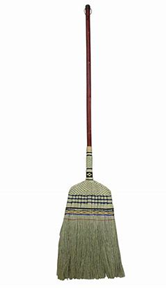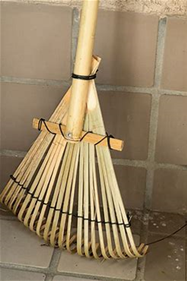Why do we clean up at the end of the year?
Yoshie Doi
 |
 |
When I was a child, cleaning at the end of the year was an annual event in Japan, and the whole family events. The roots of the end-of-year cleaning were an ancient Japanese annual event called “Susuharai : Cleaning events”.
At the end of the year, there was an event called Oharae, in which soot and dust were removed from the ceiling and Buddha statues with a bamboo broom. It is still practiced today at shrines and temples.
During the Asuka period, envoys to the Tang Dynasty brought Buddhism to Japan, and the concept of cleaning spread among the nobility. When the toothpick first came to Japan, it was brought to Japan as a tool for cleaning the mouth as a Buddhist altar.
In ancient times, cleaning had a strong religious connotation, and it was also a ritual to cleanse the room at funerals by sweeping it with a broom so that the spirits of the dead would not return. In the Nara period, short-handled wipes were called Hahaki, and the oldest broom in Japan is preserved in Shosoin. This is not a cleaning tool, but something that the Empress uses for Shinto rituals, and a beautiful small glass ball is passed through the tip. Brooms were also used as tools in religious ceremonies to purify impurities.
In ancient Japan, it was believed that Toshigami would visit homes on New Year’s Eve. Therefore, we clean up the place and welcome the New Year. It’s a big cleaning for that, so the timing of exorcism is also connected to the mental and physical cleaning of the end of the year. In “Kojiki” (Records of Ancient Matters), ‘Outoshi-no-kami : Gods’ and ‘Otoshi-no-kami : Gods’ appear.
There was an idea that sweeping with a broom would invite good things in and drive out bad things. During the Heian period, a cleaning department called Kamon-no-Ryo was created in the imperial court, and it is believed that cleaning at the end of the year became a custom around this time.
The reason why Susuharai is held on December 13th every year is that December 13th of the lunar calendar was Kishukunichi, which is said to be good luck at all times except for weddings. Even at Edo Castle, the soot sweeping began to take place on this day, and it spread among the common people. It seems that the 13th has been established as a sacred event to welcome the New Year God, not just cleaning.
When the only means of transportation was on foot, it is also said to be the date and time that the servants started in time for the New Year. Even in Kyoto, Hanamachi starts the event on 13th December. This event began in the Edo period, when Geisha and Maiko in Geisha districts visit their masters to say hello to their masters for the past year and begin preparations for the new year.
We want to do a big cleaning, clarify our goals and tasks for next year, and reset our mind and body for the new year.
The end of document
